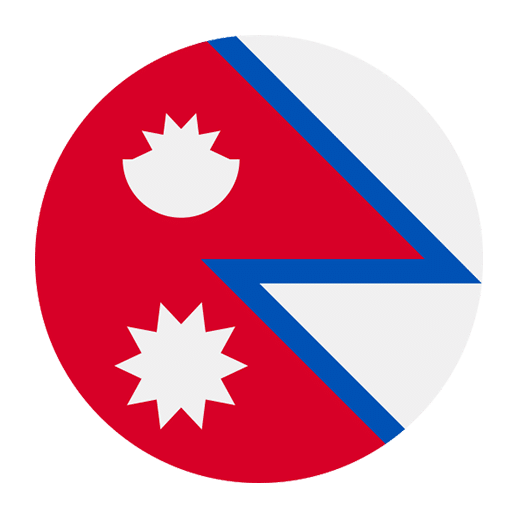Learning to speak Nepali with perfect pronunciation can be a rewarding and enriching experience. Nepali, the official language of Nepal, is a beautiful and melodious language that is spoken by millions of people in Nepal, as well as in certain parts of India, Bhutan, and Myanmar. Mastering Nepali pronunciation will not only help you communicate effectively but also allow you to immerse yourself in the rich culture and traditions of the Nepali-speaking world. This article will guide you through the intricacies of Nepali pronunciation and provide practical tips to help you speak like a native.
Understanding Nepali Pronunciation
Before diving into the specifics of pronunciation, it is essential to understand the basics of the Nepali language. Nepali is an Indo-Aryan language that uses the Devanagari script, the same script used for Hindi and Sanskrit. While the script might seem daunting at first, focusing on pronunciation will make the learning process much smoother.
The Nepali Alphabet
The Nepali alphabet consists of 46 basic letters: 33 consonants and 13 vowels. Each letter has a distinct sound, and mastering these sounds is the first step toward perfect pronunciation.
Vowels:
1. अ (a)
2. आ (aa)
3. इ (i)
4. ई (ii)
5. उ (u)
6. ऊ (uu)
7. ए (e)
8. ऐ (ai)
9. ओ (o)
10. औ (au)
11. अं (an)
12. अः (ah)
13. ऋ (ri)
Consonants:
1. क (ka)
2. ख (kha)
3. ग (ga)
4. घ (gha)
5. ङ (nga)
6. च (cha)
7. छ (chha)
8. ज (ja)
9. झ (jha)
10. ञ (nya)
11. ट (ta)
12. ठ (tha)
13. ड (da)
14. ढ (dha)
15. ण (na)
16. त (ta)
17. थ (tha)
18. द (da)
19. ध (dha)
20. न (na)
21. प (pa)
22. फ (pha)
23. ब (ba)
24. भ (bha)
25. म (ma)
26. य (ya)
27. र (ra)
28. ल (la)
29. व (wa)
30. श (sha)
31. ष (sha)
32. स (sa)
33. ह (ha)
Phonetic Tips for Vowels and Consonants
Vowels
1. अ (a) – This vowel is pronounced like the ‘a’ in “about.” It’s a short, neutral sound.
2. आ (aa) – This is a long vowel, similar to the ‘a’ in “father.”
3. इ (i) – This vowel is pronounced like the ‘i’ in “sit.”
4. ई (ii) – This is a longer version, like the ‘ee’ in “see.”
5. उ (u) – This vowel is similar to the ‘u’ in “put.”
6. ऊ (uu) – This is a longer version, like the ‘oo’ in “food.”
7. ए (e) – Pronounced like the ‘e’ in “they.”
8. ऐ (ai) – This is a diphthong, similar to the ‘ai’ in “aisle.”
9. ओ (o) – Pronounced like the ‘o’ in “go.”
10. औ (au) – This is another diphthong, similar to the ‘ow’ in “cow.”
11. अं (an) – This is a nasalized vowel, somewhat like the ‘an’ in “sang.”
12. अः (ah) – This is a short, abrupt sound, often used at the end of words.
13. ऋ (ri) – This is a unique sound, similar to the ‘ri’ in “riddle.”
Consonants
1. क (ka) – This is a hard ‘k’ sound, like in “kite.”
2. ख (kha) – This is an aspirated ‘k’ sound, like the ‘kh’ in “khaki.”
3. ग (ga) – Similar to the ‘g’ in “go.”
4. घ (gha) – This is an aspirated ‘g’ sound, like ‘gh’ in “ghost.”
5. ङ (nga) – This is a nasal sound, like the ‘ng’ in “sing.”
6. च (cha) – Similar to the ‘ch’ in “chop.”
7. छ (chha) – An aspirated version, like the ‘chh’ in “watch house.”
8. ज (ja) – Similar to the ‘j’ in “jar.”
9. झ (jha) – An aspirated ‘j’ sound, like ‘jh’ in “hedgehog.”
10. ञ (nya) – A nasal sound, like the ‘ny’ in “canyon.”
11. ट (ta) – A retroflex ‘t,’ pronounced with the tongue curled back.
12. ठ (tha) – An aspirated retroflex ‘t.’
13. ड (da) – A retroflex ‘d,’ pronounced with the tongue curled back.
14. ढ (dha) – An aspirated retroflex ‘d.’
15. ण (na) – A retroflex ‘n,’ pronounced with the tongue curled back.
16. त (ta) – A dental ‘t,’ pronounced with the tongue against the upper teeth.
17. थ (tha) – An aspirated dental ‘t.’
18. द (da) – A dental ‘d,’ pronounced with the tongue against the upper teeth.
19. ध (dha) – An aspirated dental ‘d.’
20. न (na) – A dental ‘n,’ pronounced with the tongue against the upper teeth.
21. प (pa) – Similar to the ‘p’ in “pot.”
22. फ (pha) – An aspirated ‘p,’ like the ‘ph’ in “uphill.”
23. ब (ba) – Similar to the ‘b’ in “bat.”
24. भ (bha) – An aspirated ‘b,’ like the ‘bh’ in “abhor.”
25. म (ma) – Similar to the ‘m’ in “man.”
26. य (ya) – Similar to the ‘y’ in “yes.”
27. र (ra) – A rolled ‘r,’ similar to the Spanish ‘r.’
28. ल (la) – Similar to the ‘l’ in “love.”
29. व (wa) – A sound between ‘v’ and ‘w,’ like the ‘v’ in “very” with a slight ‘w’ quality.
30. श (sha) – Similar to the ‘sh’ in “she.”
31. ष (sha) – A retroflex ‘sh,’ pronounced with the tongue curled back.
32. स (sa) – Similar to the ‘s’ in “see.”
33. ह (ha) – Similar to the ‘h’ in “house.”
Common Pronunciation Challenges
Even with a basic understanding of the Nepali alphabet, some sounds may still pose challenges for English speakers. Here are a few common difficulties and tips to overcome them:
Retroflex Sounds
Retroflex sounds, such as ट (ta), ठ (tha), ड (da), and ढ (dha), are pronounced with the tongue curled back towards the roof of the mouth. These sounds can be challenging for English speakers as they do not exist in English. To master these sounds, practice curling your tongue back and releasing the sound with a slight flick.
Aspirated Consonants
Aspirated consonants, such as ख (kha), घ (gha), छ (chha), and झ (jha), are pronounced with a burst of air. These sounds are similar to their non-aspirated counterparts but require an extra breath. Practice pronouncing these sounds by holding a piece of paper in front of your mouth. If the paper moves when you pronounce the sound, you are aspirating correctly.
Nasal Sounds
Nasal sounds, such as ङ (nga) and ञ (nya), require you to direct airflow through your nose. Practice these sounds by humming and feeling the vibration in your nose. Once you are comfortable with the vibration, try incorporating it into the pronunciation of the nasal consonants.
Tips for Improving Nepali Pronunciation
Listen and Mimic
One of the most effective ways to improve your pronunciation is by listening to native speakers and mimicking their speech. Watch Nepali movies, listen to Nepali music, and engage with native speakers as much as possible. Pay attention to the nuances of their pronunciation and try to imitate them.
Record Yourself
Recording yourself speaking Nepali can be a valuable tool for self-assessment. Listen to the recordings and compare your pronunciation to that of native speakers. Identify areas where you need improvement and practice those specific sounds.
Practice with a Language Partner
Finding a language partner who is a native Nepali speaker can provide you with valuable feedback on your pronunciation. Engage in regular conversations with your language partner and ask for corrections and suggestions.
Use Pronunciation Apps and Tools
There are several language learning apps and tools available that can help you improve your Nepali pronunciation. Apps like Duolingo, Memrise, and Pimsleur offer pronunciation exercises and feedback to help you refine your skills.
Learn Phonetic Transcriptions
Understanding the International Phonetic Alphabet (IPA) can be immensely helpful in mastering pronunciation. The IPA provides a standardized way to represent the sounds of any language, including Nepali. Familiarize yourself with the IPA symbols for Nepali sounds and use them as a reference when practicing.
Focus on Intonation and Stress
In addition to individual sounds, pay attention to the intonation and stress patterns in Nepali. Nepali is a syllable-timed language, meaning each syllable is given equal emphasis. Practice speaking with the correct rhythm and stress to sound more natural.
Common Nepali Words and Phrases
To help you practice your pronunciation, here are some common Nepali words and phrases along with their phonetic transcriptions:
1. नमस्ते (namaste) – /nə.mə.steɪ/ – Hello
2. धन्यवाद (dhanyabad) – /dʰən.jə.bɑːd/ – Thank you
3. माफ गर्नुहोस् (maaf garnuhos) – /maːf ɡər.nu.ɦos/ – Excuse me/Sorry
4. कस्तो छ? (kasto cha?) – /kəsto tʃʰə/ – How are you?
5. म सन्चै छु (ma sanchai chhu) – /maː sʌntʃʰaɪ tʃʰu/ – I am fine
6. तपाईंको नाम के हो? (tapainko naam ke ho?) – /tɑːpɑɪnkoː nɑːm ke ɦo/ – What is your name?
7. मेरो नाम … हो (mero naam … ho) – /mero nɑːm … ɦo/ – My name is …
8. मलाई थाहा छैन (malai thaaha chaina) – /mʌlɑɪ tʰɑːɦɑː tʃʰaɪnə/ – I don’t know
9. हो (ho) – /ho/ – Yes
10. होइन (hoina) – /hoɪnə/ – No
Conclusion
Perfecting your Nepali pronunciation takes time, dedication, and practice. By understanding the basics of the Nepali alphabet, focusing on challenging sounds, and utilizing various learning strategies, you can significantly improve your pronunciation skills. Remember to listen to native speakers, practice regularly, and seek feedback from language partners or tools. With consistent effort, you will find yourself speaking Nepali with confidence and clarity, opening doors to meaningful connections and cultural experiences. Happy learning!

